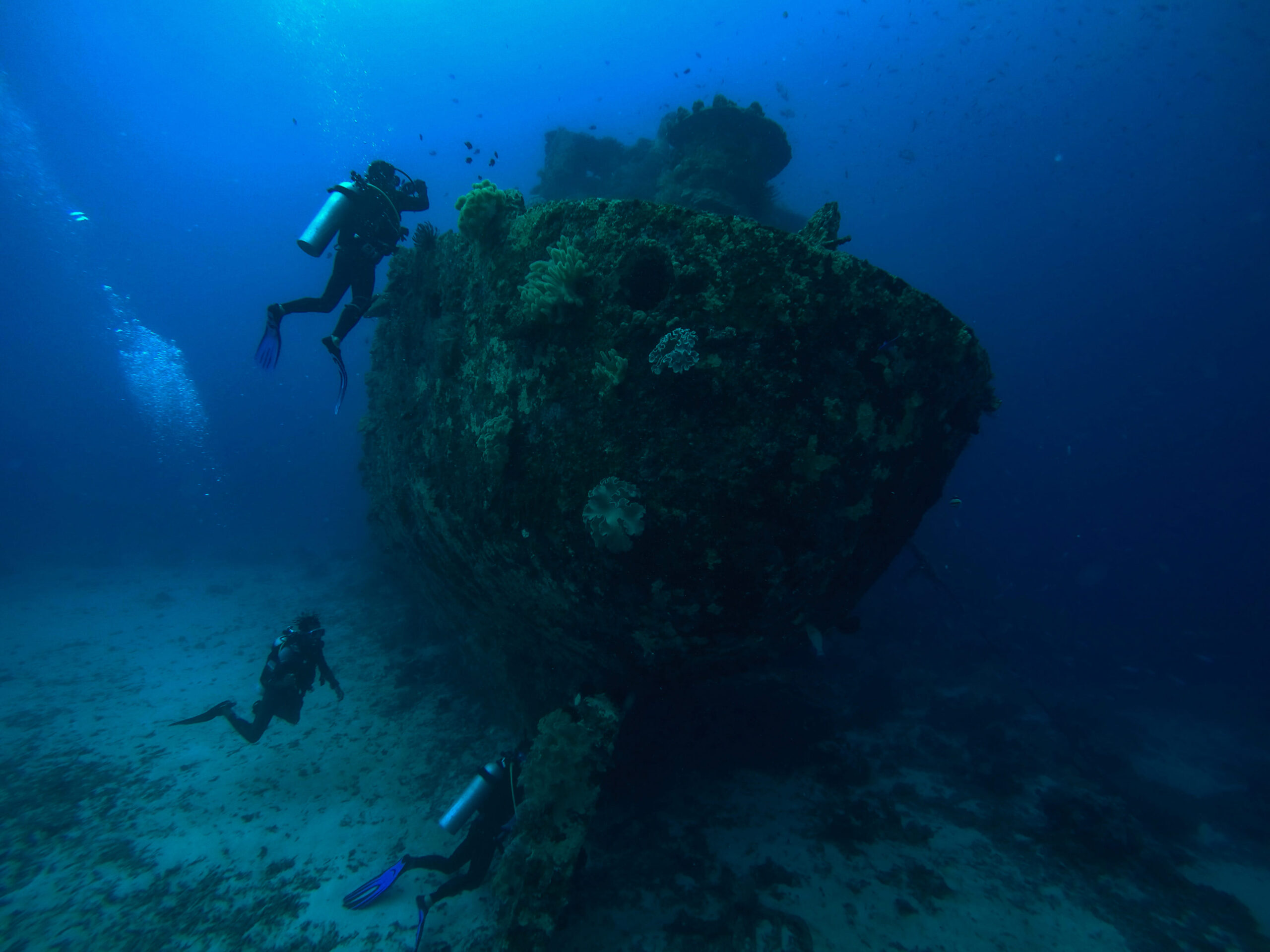MV Oceania runs different itineraries during the year to suit the weather patterns of each season. The “Signature Itinerary” covers at least two the three most popular diving areas of Kimbe Bay, Witu Islands and Fathers Reefs. You will be able to choose from 9 & 10-night Signature itineraries in the ‘peak’ weather months: mid-September, October and November … then April, May and June.
The final itinerary is, of course, always dependent upon weather, sea conditions and where the best animal sightings are at any particular time of year
ITINERARY HIGHLIGHTS
SIGNATURE ITINERARY (including at least 2 of the following: Kimbe Bay, Fathers Reefs, Witu Islands) …. 8, 9 or 10 nights … The Signature Itinerary gives a fantastic cross-section of many different dive types, from coral gardens, seamounts, reef walls, arches and overhanging ledges, to muck diving in rubbly black sand bays.
Kimbe Bay and the nearby reefs and composed of ridges, walls, gentle slopes, sheer drops, swim-throughs, caves, ledges and overhangs. Divers revel in the brilliantly colored coral bommies, the huge gorgonian fas and red whip corals, the impressive staghorn corals, brain corals, large colonies of leather corals & black coral, as well as the big barrel sponges and elephant ear sponges. Many of these are adorned with colorful crinoids. Also, sea anemones and a variety of anemone fish abound.
Hiding in this superb variety of coral and sponge life, you’ll find a wide variety of critters such as crabs, scorpion fish, nudibranchs, flatworms, feather duster worms, leafy scorpion fish, mandarin fish, seahorses … and darting all around you and the reefs will be bat fish, unicorn fish, Moorish idols, parrot fish, damsel fish, fusiliers, triggerfish and purple anthias. Of course, the small stuff brings in the larger fish, so you’ll see large schools of batfish, rainbow-runner, dogtooth tuna, big-eye trevally and barracuda. Then, needless to say, the ocean hunters are attracted, so get ready for sightings of gray reef sharks, white tip reef sharks and hammerheads.
For wreck enthusiasts, there’s an intact Japanese A6M2 Mistubishi Zero airplane which offers superb photo opportunities.
RABAUL …typically 9 nights … a superb macro destination
Rabaul is known topside for WWII history – but what really makes Rabaul shine is the areas jetty dives. Macro lovers will delight at the sandy bottom dives featuring a myriad of different species of frogfish, harlequin ghost pipefish, bumblebee shrimp, harlequin shrimp, mandarin fish, coconut octopus, boxer crabs, leaf scorpion fish and nudibranchs – just to name a few. On the outer reefs the topography is beautiful and unique, formed over many years of volcanic activity. Rabaul Harbour itself was formed when an ancient volcanic caldera partially collapsed thousands of years ago. The harbor is surrounded by many small volcanoes, most of which are dormant or extinct. That being said, Tarvuvur remains active today and is breathtaking when viewed from a distance at sunset.
Rabaul Mask Festival is held in July each year. Oceania endeavors to operate two trips to coincide with this festival. One trip departs Walindi and finishes in Rabaul, arriving at the start of the festival. And the second trip departs from Rabaul at the end of the festival and returns to Walindi. As trips are scheduled well in advance, occasionally the trip dates don’t match. Talk with us about how the dates fall during the year you’re interested in going.
MILNE BAY – ALOTAU … typically 10 nights, early in the year … muck diving mania plus plenty of pelagics
Situated at the south-eastern tip of the mainland, Milne Bay likes to claim that the term “muck diving” actually originated here! You can expect blue ribbon eels, cuttlefish, lion fish, a huge variety of nudibranchs, manta shrimps, mandarin fish, frog fish, sea horses, ghost pipe fish, cockatoo wasp fish and more. And while it’s true that “muck-diving extraordinaire” exists in this bay, you won’t want to limit your diving only to that genre, as there is so much more to explore. You’ll find those critters, sure, but also incredible corals, walls, plenty of pelagics – including mantas & hammerheads – and some fabulous wreck diving!






















